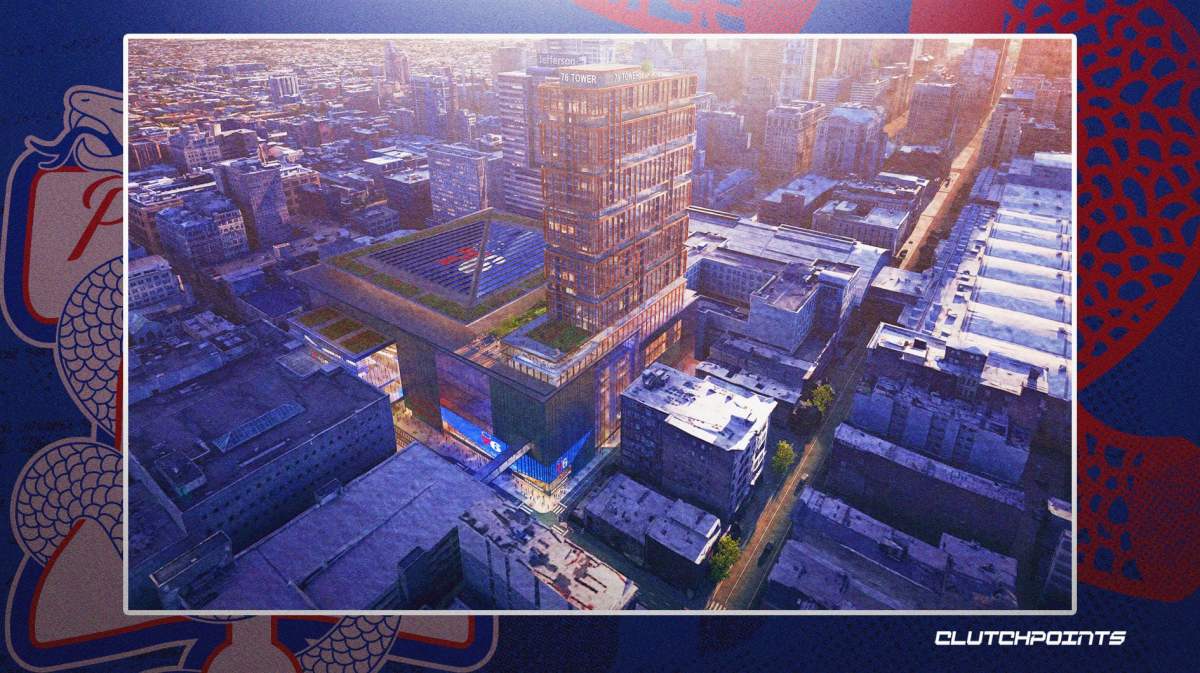The Philadelphia 76ers, seeking a new home for the future, are planning to construct 76 Place in Center City Philadelphia after its lease ends in the Wells Fargo Center in 2031. The Sixers and the company tasked with the project, 76 Devco, are continuing to reveal key details that include the 18,500-seat arena's look and facets of its operation in the city.
After recently announcing that the new arena and its construction projects to bring massive tax revenue for the city, the Sixers released new renderings of 76 Place and outlined more information about the project, including a plan to finance a residential building on top of the arena.
Sixers have released new renderings of 76 Place and announce a $250 million investment into a mixed-income residential building to be built on the proposed arena.
The announcement states that of the estimated 395 units, 20% will be used for rent as affordable housing. pic.twitter.com/VKZrLviyN8
— Sam DiGiovanni (@BySamDiGiovanni) August 9, 2023
The renderings feature digital signage on all four sides, including a pronounced display on the front of the arena. The Sixers' announcement says that the signage will “be used to promote ticketed and non-ticketed events, community messaging, as well as a community art program.”
David Adelman, a Sixers co-owner and the chairman of 76 DevCo, said in the announcement that the new renderings take community feedback into consideration and draw inspiration from 28 other downtown arenas of NBA teams. The Sixers and Chicago Bulls are the lone teams whose arenas are not located in a downtown setting.
“Our goal is to deliver a new privately funded arena that makes a positive and lasting impact on our city by promoting inclusive community development that will generate more than 10,000 local jobs, more than $1B in new tax revenues for the city, state and School District of Philadelphia, and be a catalyst for the revitalization of East Market Street,” said Adelman.
The Sixers announced that they will invest an additional $250 million into a mixed-income residential building to be built on the proposed arena. The building is estimated to have 395 units and the team said that 20 percent of them (79 units) will be designated for rent as affordable housing options.
Additionally, the Sixers said that 76 Place will “embody core principles of sustainability at all levels” and that its design will “incorporate sustainable carbon reduction strategies, balancing nature- and technology-driven solutions within the arena framework,” as exemplified by the solar panels and green roof in the bird's-eye-view renderings. The announcement also highlighted the event floor of the arena being above the street level to allow retail stores to remain open regardless of any arena events and open a new entrance for Jefferson Station, one of the city's biggest transit stops.
The Sixers and 76 DevCo are eager to prove that the arena will be a massive benefit for Philadelphia amid heated opposition from residents and activists of the city's Chinatown. Neeta Patel, the interim executive director of Asian Americans United, said in a press release that 76 DevCo's claims are difficult to trust for those in Chinatown, echoing sentiments felt by many members of the community.
“We all agree Philly needs more affordable housing, and history shows these arena developers won’t actually build it,” said Patel. “We can’t trust the claims of these developers, who have built their careers and fortunes on displacement.”
In a recent appearance on the Front Office Sports Today podcast (at the 19:00 mark of the episode), Adelman maintained his stance that the Sixers' arena project will not displace Chinatown residents or businesses. More information about 76 Place and its impact will be made available over time by both the developers and studies from the Philadelphia Industrial Development Corporation (PIDC).
In April, three studies were commissioned for the PIDC to hire consultants to research the impact it would have on the area. The Sixers will pay $650,000 to cover the costs of at least two of the studies. The financing raises concern among Chinatown residents hoping the studies will be impartial but follows 76 DevCo's stated goal of having the project be privately funded.



















